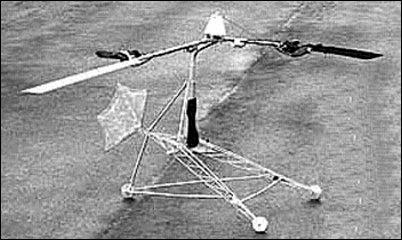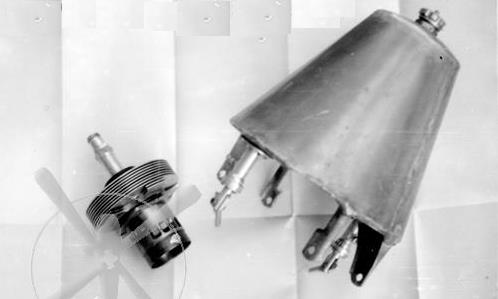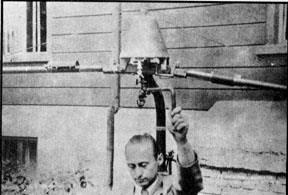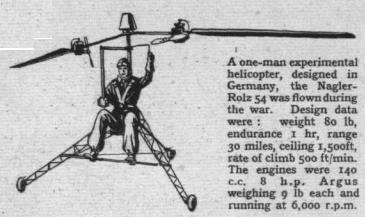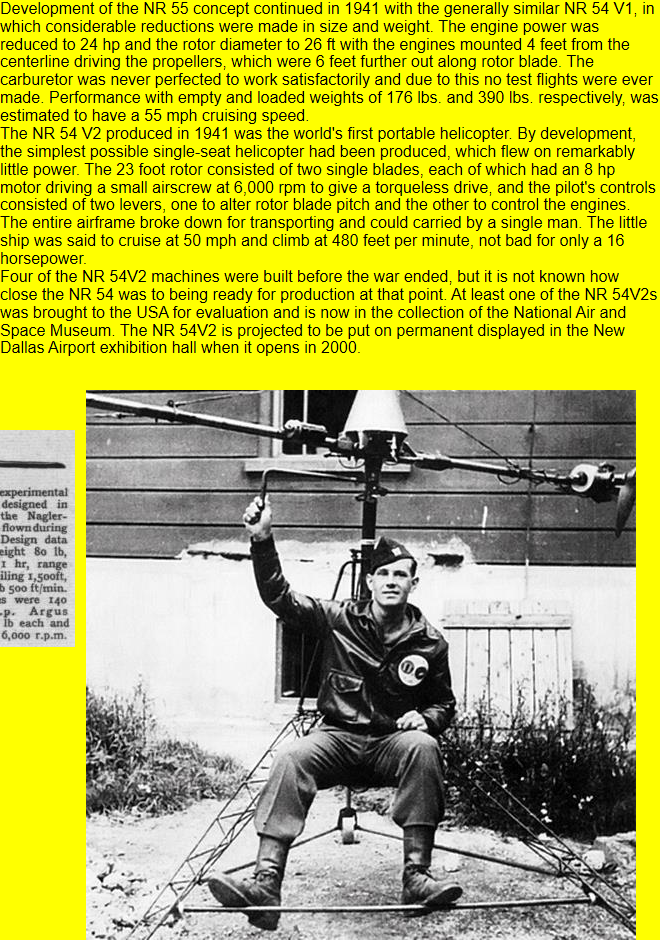| Type | V1 Single seat portable helicopter | V2 Single seat portable helicopter |
| Engine | 1 2 8 hp engine |
|
| Dimensions | Length , height , span , wing area ,rotordia. 10,5 m | Rotordiameter 7,92 m |
| Weights | Empty , loaded 338 kg , max. take off weight | Empty 36,5 kg, flying weight 140 kg |
| Performance | Max.. speed , cruising speed (estmated) 97 km/h , range , endurance , service ceiling , climb | Cruising speed 80 km/h, ceiling 460 m, range 50 km |
